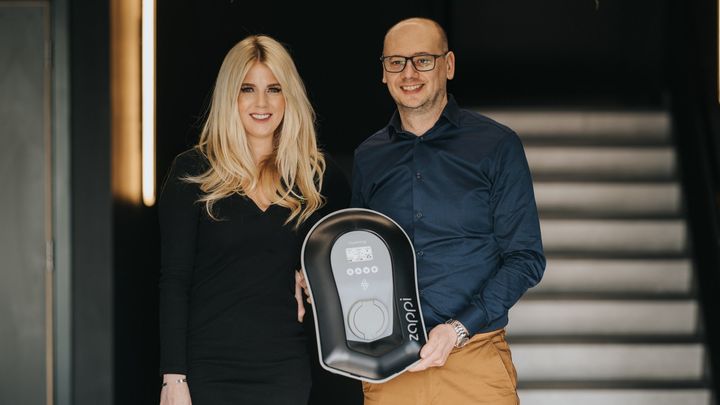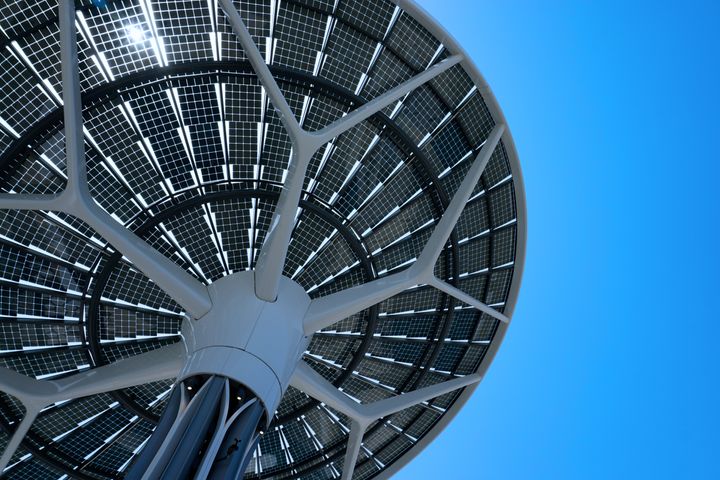Sustainable Solutions for a Carbon-Neutral Future: A New Frontier of Climate-Friendly Materials
As we face the realities of climate change, the importance of reducing carbon footprint has become more evident than ever before. In this quest for a more sustainable future, a new frontier has emerged in the form of climate-friendly materials that have the potential to capture and store carbon dioxide. With the aim of mitigating the effects of climate change, scientists and researchers are pushing the boundaries of material science to develop innovative solutions that could revolutionise the way we build, live and consume. In this blog, we will look into some of the developments in climate-friendly and carbon capturing materials, exploring their potential to make a significant impact in reducing carbon emissions and combatting the effects of climate change.
Olivine: A volcanic mineral that can remove carbon dioxide (CO2) from the atmosphere through mineral carbonation. This process involves the reaction between CO2 and magnesium & calcium ions in olivine sand, which results in the formation of stable carbonates.
The mineral carbonation process using olivine sand has several benefits, including the creation of permanent carbon storage through the stable carbonates formed. Additionally, it is an eco-friendly and safe method that does not involve toxic chemicals or pollutants. Olivine sand has multiple applications, such as concrete production, which can further reduce the carbon footprint of building materials.
Applying olivine sand to coastal ecosystems can enhance their capacity to capture and store carbon by reacting with CO2 in seawater to form magnesium and calcium carbonates that can be stored in sediments. This can mitigate the effects of ocean acidification and improve marine ecosystem health.
One tonne of this sand can capture up to one tonne of CO2. Climate-KIC, a European climate initiative, has estimated that if olivine were used in small-scale projects in Rotterdam, it could capture 850,000 tonnes of CO2. Olivine has potential uses as a replacement for sand and gravel in landscaping projects, as well as fertilisers.
Mycelium: An eco-friendly and sustainable option for insulation. Mycelium, which is the root structure of mushrooms, can be grown easily and quickly in a controlled environment, making it an ideal choice for insulation. One of the major benefits of mycelium insulation is that it is completely biodegradable, unlike traditional insulation materials such as fibreglass or foam. These materials can take hundreds of years to decompose in landfills, whereas mycelium insulation breaks down naturally in just a few years, causing no harm to the environment or wildlife.
In addition, mycelium absorbs carbon from agricultural waste and stores it, making it a solution for achieving carbon negative in building construction. It does not release harmful chemicals during production or disposal, and it has a low carbon footprint, requiring minimal energy and resources for production and transportation. After use, mycelium insulation can be easily recycled or composted, further reducing its environmental impact.
Solein: A novel food ingredient that is rich in protein and is produced by fermenting carbon dioxide and water using renewable electricity. This innovative technology has the potential to transform the food industry by providing a sustainable solution to address climate change.
One of the primary advantages of solein is that it can be produced without the use of arable land, freshwater, or fertilisers. This makes it an ideal solution for feeding the growing global population without contributing to deforestation, water scarcity, or pollution. Additionally, the production process of solein has a significantly lower carbon footprint than traditional protein sources, such as beef or soy.
Solein is also a versatile ingredient that can be used in a range of food products, including plant-based meats, dairy alternatives, and baked goods. Its neutral taste and texture make it an attractive alternative to animal-based proteins, which can help to reduce the environmental impact of food production.
Solar Foods, a Finnish start-up, is currently one of the companies producing solein. The company has received funding from various investors and has partnered with several companies to bring this sustainable food ingredient to the market.
Its low carbon footprint, versatility, and ability to capture carbon dioxide makes it a promising alternative to traditional protein sources. Continued research and development of this technology can help to accelerate the transition towards a more sustainable food system and mitigate the effects of climate change.
Melamine: A chemical compound commonly used in the production of plastics, laminates, and adhesives, has been proposed as a possible solution to address the climate crisis. The idea is to use melamine foam as a means of capturing and storing carbon dioxide (CO2) from the atmosphere.
Melamine foam has a unique porous structure that allows it to trap CO2 molecules. This foam has been tested in various conditions and has been found to be effective in capturing CO2 from the air. Once the foam has captured the CO2, it can be compressed into a solid material that can be stored underground or in other locations.
While the use of melamine foam as a climate crisis solution is still in the testing phase, the potential benefits are significant. If successful, this solution could help to reduce the levels of CO2 in the atmosphere and mitigate the impact of climate change.
Zeolite based materials: The newly developed material is a hybrid foam made from bio-based materials and contains a large amount of zeolites, which are excellent at capturing carbon dioxide. This material is sustainable and has a high capture rate due to its porous and open structure. Additionally, it has low operating costs, making it a cost-effective solution for carbon capture.
By combining zeolites, which are highly effective in capturing carbon dioxide, with gelatine and cellulose, a durable, lightweight, and stable material with high reusability has been created. The combination of cellulose and zeolites makes the material eco-friendly and affordable.
This research aligns with ongoing developments in CCS and CCU technology, offering a sustainable alternative with great potential. Since the material is solid, it is easier and more efficient to separate the captured carbon dioxide from liquid amine solutions, making it an attractive option for carbon capture.
With the increasing threat of climate change, it is vital that we explore and invest in innovative solutions that can mitigate the harmful effects of carbon emissions. The materials discussed in this blog are promising examples of how we can create a more sustainable world. However, there is still much work to be done, and it will require collaboration and continued investment in research and development to scale up the production and usage of these materials. Ultimately, the choices we make now will determine the future we leave for generations to come. By prioritising sustainability in all areas of our lives, we can build a cleaner, healthier, and more resilient world.




 Industry Inscript is a subsidiary of Valiant and Company Ltd.
Industry Inscript is a subsidiary of Valiant and Company Ltd.
Comments ()